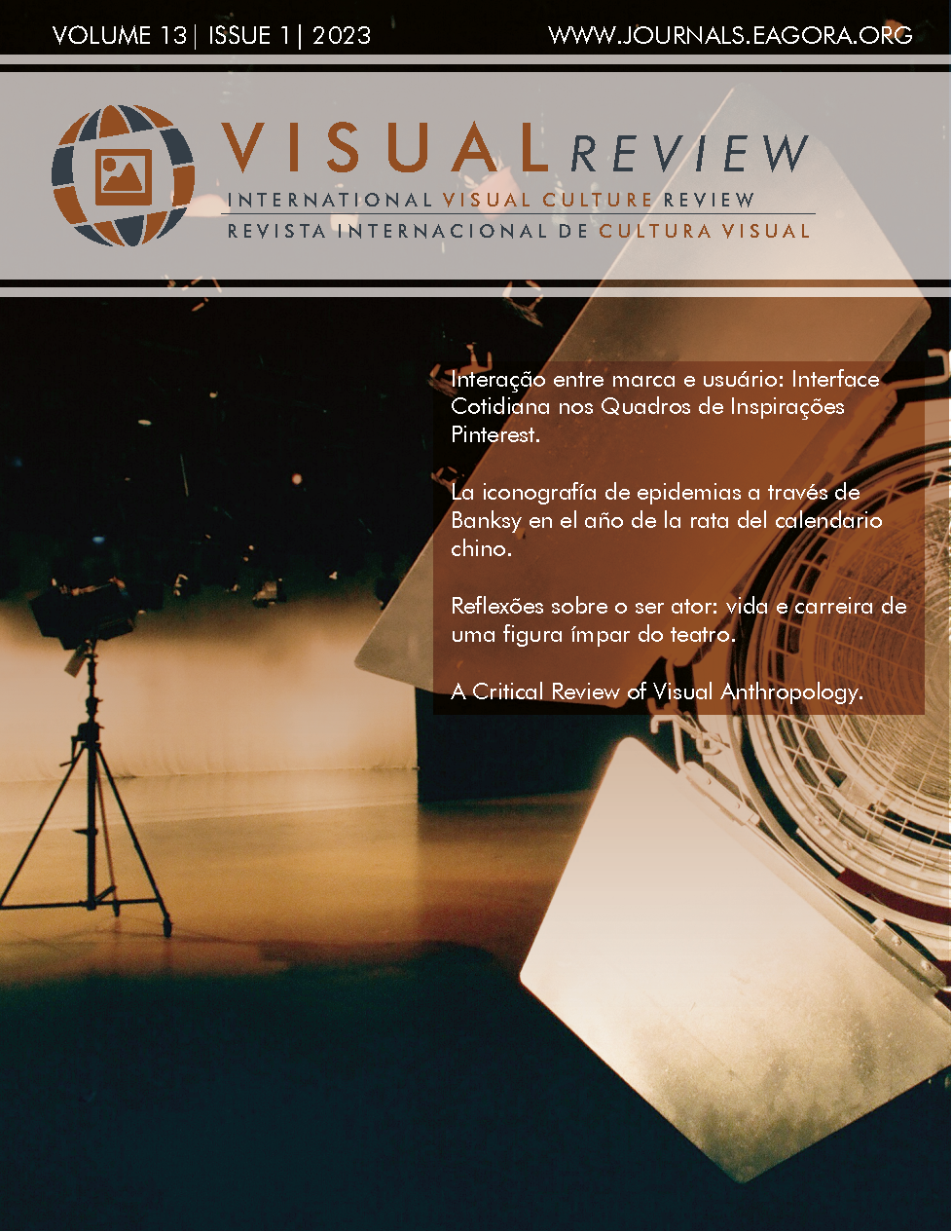Bio and necropolitical portraits in the 35mm negatives of the Hermanos Mayo
Approaches to a vitiated and vagabond masculinity in the urban daily life of contemporary Mexico
DOI:
https://doi.org/10.37467/revvisual.v10.3370Keywords:
Hermanos Mayo, 35mm negatives, Male nudity, Uninhabitable urban microspaces, Historical gesture, Biopolitics and necropolitics, New geographiesAbstract
Through the intersection between visual culture and the humanities (specifically history), I intend to analyze the 35mm negatives of the photographs taken by the Hermanos Mayo of a male individual who was naked and drugged on a main avenue in Mexico City in 1971. We will investigate how it was observed and exposed in an urban space where pedestrians and bystanders became spectators of said event. These spectators, stopping to contemplate and apprehend the drug addict, formed a specific urban microspace to corral him and expose him to death. That is, they built an uninhabitable space within the habitable.
Downloads
Global Statistics ℹ️
|
923
Views
|
173
Downloads
|
|
1096
Total
|
|
References
Archivo General de la Nación México (AGNM). (1971). Colección Fotográfica Hermanos Mayo. Sección Concentrados I Caja HM/CN1/1581-A. Expediente/Legajo: ARCH 3, cajón 5, microfoto.
AGNM. (1980 ca.) Colección Fotográfica Hermanos Mayo. Sección Concentrados I. Caja HMA 1580-A maricones y esas cosas, s.f, s.n.
Estévez, A. (2018). Biopolítica y necropolítica: ¿constitutivos u opuestos? Espiral, Estudios sobre Estado y Sociedad, XXV(73), 9-43. https://doi.org/10.32870/espiral.v25i73.7017 DOI: https://doi.org/10.32870/espiral.v25i73.7017.g6149
General de la Nación, A. (1994). Archivo fotográfico Hermanos Mayo. Cédula descriptiva. Boletín Del Archivo General De La Nación, 4(02), 245-246. https://bagn.archivos.gob.mx/index.php/legajos/article/view/1040
Gutiérrez Luna, D. (2020). Geografías de muerte versus tejidos territoriales de vida: otros modos de elaboración política (México). Revista NERA, 23 (54), 35-58. http://dx.doi.org/10.47946/rnera.v23i54.7909 DOI: https://doi.org/10.47946/rnera.v23i54.7909
Hernández, F. (2005). ¿De qué hablamos cuando hablamos de cultura visual? Educação & Realidade, 30(2), 9-34. https://seer.ufrgs.br/educacaoerealidade/article/view/12413
Hernández Castillo, D. (2021). Hemeroteca Nacional de México (HNM), Ratas para el hambre, 1956. Fondo Contemporáneo. Revistas Nacionales, Materia Geográfica: México. Política y gobierno. Publicaciones periódicas. Revista Historia para Todos, 14, 36-40. https://bit.ly/3Reg1Sh
Levin Rojo, D. A., Romero, S. J., Hernández Fuentes, M.A. y Martínez Carrizales, L. (2017). El campo de la historiografía. Inducción. [Posgrado en Historiografía]. UAM Azcapotzalco.
Hernández Ríos, M. y G. Tolosa Sánchez. (2011). La imagen fotográfica como documento de lo perdurable: el discurso visual de las instantáneas de los Hermanos Mayo. Revista Digital CENIDIAP, 18. http://discursovisual.net/dvweb18/agora/agoriostolosa.htm#
Real Academia Española (s.f.). Marihuana. En Diccionario de la lengua española. Recuperado el 2 de febrero de 2022, de https://dle.rae.es/marihuana
Mendiola, I. (2017). De la biopolítica a la necropolítica: la vida expuesta a la muerte. Eikasia. Revista de Filosofía, 75, 219-248. https://dialnet.unirioja.es/servlet/articulo?codigo=6799663
Monroy Nars, R. (2006). A ojo de pájaro: los trasterrados vistos por sí mismos. Boletín del Archivo General de la Nación, 6 (11), 188-192. https://bit.ly/3RgrtN6
Parrini, R., N. Celis, C. Calquín y R. Celedón. (2021). Masculinidades: campos críticos, procesos emancipatorios y reconfiguraciones de la hegemonía. Hybris. Revista de Filosofía, 12, 2021, 5-9. https://revistas.cenaltes.cl/index.php/hybris/article/view/446/641
Ugarte Blanco, J. (1989). Aproximación metodológica a la Historia de los gestos. Liño: Revista Anual de Historia del Arte, 8, 161-170. https://dialnet.unirioja.es/servlet/articulo?codigo=72673
Valderrama-Rentería, C. (2019). Reseña. Espacios geográficos construidos para el destierro. CS, 27, 173-177. https://doi.org/10.18046/recs.i27.3362 DOI: https://doi.org/10.18046/recs.i27.3362
Downloads
Published
How to Cite
Issue
Section
License
Those authors who publish in this journal accept the following terms:
-
Authors retain copyright.
-
Authors transfer to the journal the right of first publication. The journal also owns the publishing rights.
-
All published contents are governed by an Attribution-NoDerivatives 4.0 International License.
Access the informative version and legal text of the license. By virtue of this, third parties are allowed to use what is published as long as they mention the authorship of the work and the first publication in this journal. If you transform the material, you may not distribute the modified work. -
Authors may make other independent and additional contractual arrangements for non-exclusive distribution of the version of the article published in this journal (e.g., inclusion in an institutional repository or publication in a book) as long as they clearly indicate that the work was first published in this journal.
- Authors are allowed and recommended to publish their work on the Internet (for example on institutional and personal websites), following the publication of, and referencing the journal, as this could lead to constructive exchanges and a more extensive and quick circulation of published works (see The Effect of Open Access).













